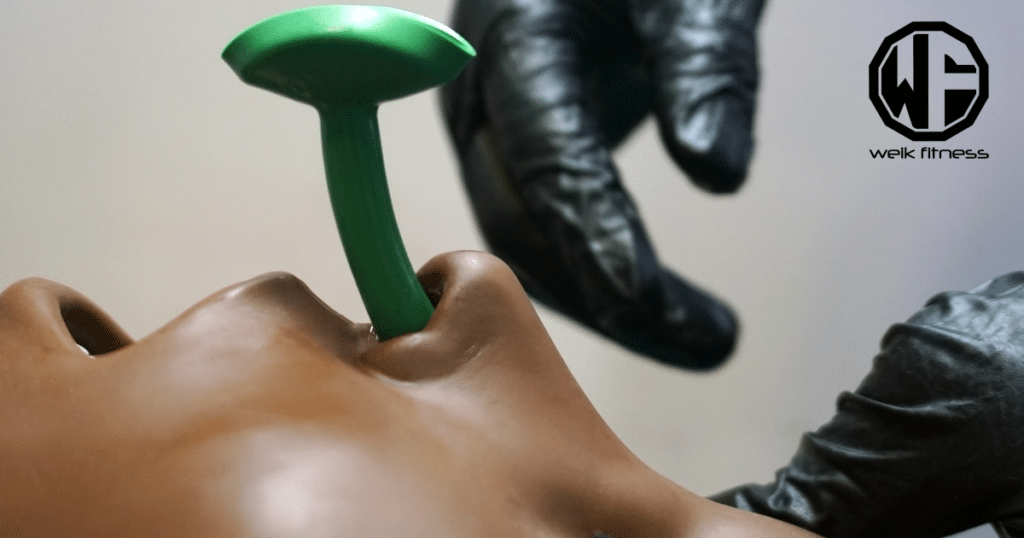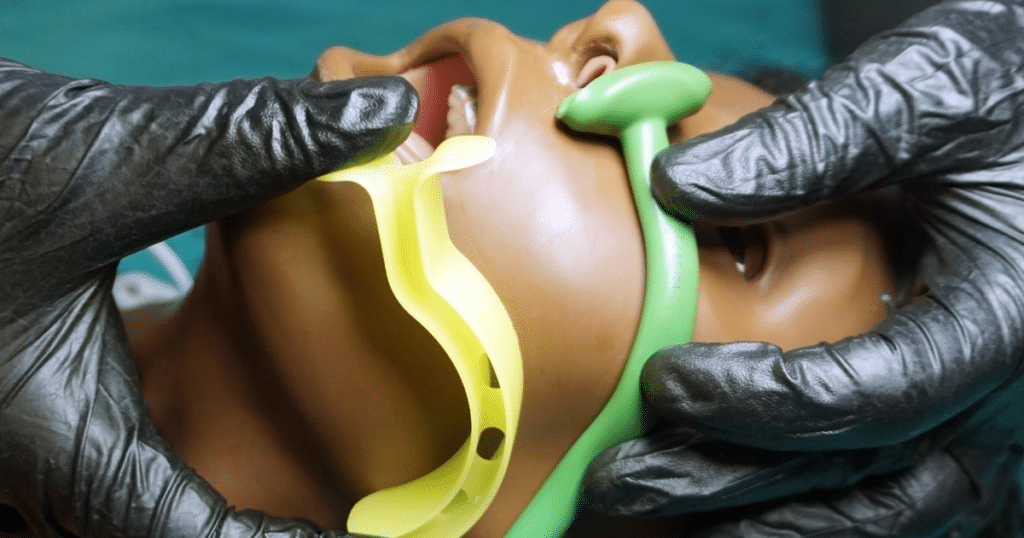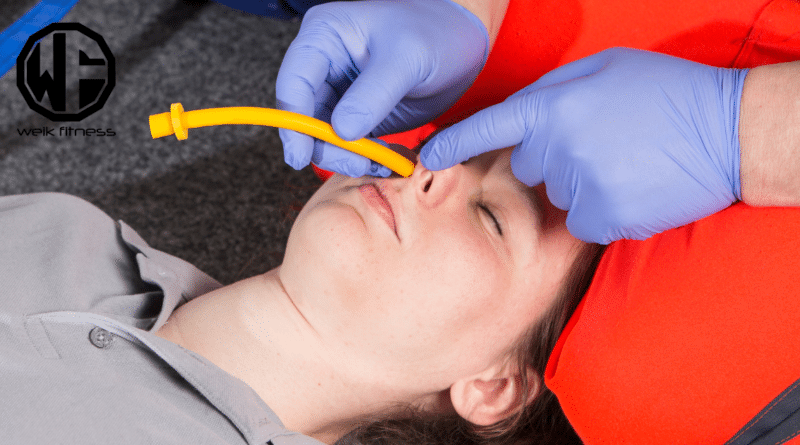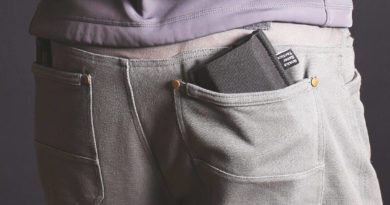Nasopharyngeal Airway: NPA Insertion During Emergencies
Let me preface this entire article on the nasopharyngeal airway or NPA by saying I am not a medical doctor, EMT, or have any medical certifications at all. This article is my compilation of experience from medical training classes and courses I have taken over the years and put into a digestible written article.
This guide is just that — a guide on the nasopharyngeal airway. This is not medical advice, and you should seek out medical training as you’ll be much more likely to need to provide medical assistance to someone than you will to pull a firearm and defend your life.
That all being said… let’s dive into the topic at hand.
Imagine the panic that sets in when someone can’t breathe properly — it’s a frightening scenario. Being there, feeling helpless because you’re unsure of how to act swiftly to make a difference, is incredibly stressful.
A key tactic often employed in such critical moments is the use of a nasopharyngeal airway (also known as an NPA). This device could be what you need in a given scenario, serving as an airway adjunct to maintain an open airway for someone struggling.
Curiosity and concern drove me to explore this topic more deeply after taking some classes with Jonathon Aldridge of Iron Forge Consulting Group and doing some reading, understanding its significance in emergency preparedness. I learned that NPAs are uniquely designed tubes meant for insertion through the nose into the back of the throat, aiding breathing during emergency scenarios.
Impressively, they are quite tolerable for conscious individuals who may not handle other airway management devices well due to gag reflex sensitivities. My intention here is clear: To guide you through everything related to a nasopharyngeal airway insertion in emergencies — from recognizing when it’s needed and executing its use correctly, selecting the appropriate size, managing potential complications, and ensuring effective aftercare.
Key Takeaways
- A nasopharyngeal airway is a special tube that goes through the nose to help people breathe in emergencies. You measure from the nose to the ear to find the right size.
- Use NPAs when someone’s airway is blocked or if they have trouble breathing but are awake. Do not use them if there are severe nose injuries or conditions.
- Before putting in a nasopharyngeal airway, make sure you have the right tools, like a lubricant and a suction device. Insert it gently into the nostril with care.
- After inserting an NPA, watch the patient closely for any problems like coughing or bleeding. Make sure it stays in place without moving.
- If there are complications with a nasopharyngeal airway, take it out carefully and check on how well the person can breathe before deciding what to do next.
Table of contents
- Key Takeaways
- Nasopharyngeal Airway Overview
- When to Use a Nasopharyngeal Airway
- When Not to Use a Nasopharyngeal Airway
- Necessary Equipment for Nasopharyngeal Airway Insertion
- How to Insert a Nasopharyngeal Airway
- Addressing Nasopharyngeal Airway Complications
- Care and Supervision Post-Insertion of NPA
- It’s a Good Idea to Keep a Nasopharyngeal Airway in Your Med Kit
- Nasopharyngeal Airways Resources

Nasopharyngeal Airway Overview
The nasopharyngeal airway is a flexible tube inserted through the nostrils into the pharynx to establish an open airway. It assists in maintaining a clear passage for airflow and preventing obstruction in emergency situations.
Definition and Function of a Nasopharyngeal Airway
I learned about the nasopharyngeal airway during my search for medical equipment for my med bag and taking some tactical medicine classes.
It’s a simple yet life-saving device that helps keep the airway open without the need of anaesthesia. Doctors and first responders use it to prevent a person’s upper airway from collapsing, especially when they’re unable to breathe on their own due to blockages or unconsciousness.
Related Article: Anti-Choking Device — Solutions for Life-Threatening Situations
Inserting an NPA involves sliding a flexible tube through one nostril till it reaches the back of the throat, creating a clear path for air. Unlike its cousin, the Oropharyngeal Airway (OPA), which can trigger a gag reflex in semi-conscious patients, a nasopharyngeal airway is better tolerated because it bypasses most of those sensitive areas.
I remember practicing its insertion on mannequins — measuring from the tip of the patient’s nose to their earlobe ensures we pick a correct length, avoiding discomfort or injury.

This hands-on experience underscored how crucial nasopharyngeal airways are in emergencies for supporting ventilation and ensuring oxygenation until further medical help arrives.
Here are some high-quality NPAs that you can purchase and put in your medical kit or trauma bag:
Anatomy for NPA Insertion
Understanding the anatomy crucial for NPA insertion is key in emergency situations. The nasal cavity, with its narrow passage, leads to the back of the throat, an area known as the nasopharynx.
This route is where I must correctly position the nasopharyngeal airway device. It’s important that I remember, the size of this plastic tube matters more than its width for a successful fit.
The target? To ensure it sits comfortably without causing harm to the person you’re trying to help.
Measuring from the nose tip to the earlobe (tragus) gives me a good estimate of how long the NPA should be. This measurement takes into account individual differences in facial structure and ensures that I choose a length that will maintain airway patency effectively without reaching too far into the throat and causing discomfort or injury.
Every time I prepare for insertion, I make sure to select an NPA that aligns with these vital anatomical landmarks to facilitate breathing and provide immediate relief during critical scenarios.
It should also go without saying that if you find someone unconscious, you should immediately call 911 or have someone make the call while you assess and try to help the patient.
When to Use a Nasopharyngeal Airway

Use a nasopharyngeal airway when dealing with the indication of airway obstructions or assisting conscious patients with airway issues.
1. Handling Airway Obstructions
Clearing airway blockages is a critical step I always take seriously. The purpose behind using a nasopharyngeal airway, or nasal trumpet as some call it, fits right into this process. It helps bypass problems at the nose, nasopharynx, or base of the tongue level.
In emergencies where breathing is tough due to these obstructions, inserting a nasopharyngeal airway can be life-saving.
I make sure that I would only use an NPA when necessary, especially in situations signifying respiratory distress caused by upper airway obstruction. This method is not suitable for everyone, though — like those with severe nasal injuries or existing conditions that might complicate things further.
Knowing when and how to insert a nasopharyngeal airway correctly could mean the difference between relief and added complications during such tense moments.
2. Assisting Conscious Patients with Airway Issues
When a conscious patient has airway issues, it’s crucial to act swiftly and efficiently. First, assess the patient’s breathing and airway for any obstructions or abnormalities. Look for signs of respiratory distress or compromised air exchange.
Then, use proper techniques to open the airway without causing further harm.
Related Article: Are Chest Seals Necessary in Trauma Kits?
If the patient is responsive and can follow commands, position them in a way that optimizes their ability to breathe comfortably. Consider using non-invasive methods such as repositioning them or providing supplemental oxygen if an EMT is on-site and can do so.
Constantly monitor their vital signs and be ready to take immediate action if their condition deteriorates.
Remember, clear communication with the patient is essential during this process — inform them of your actions and reassure them to maintain calmness and cooperation throughout the intervention.
When Not to Use a Nasopharyngeal Airway

· Severe nasal injuries
· Existing nasal conditions
1. Severe Nasal Injury
Severe nasal injury, such as a fractured nasal bone or septum (and even a skull fracture), can prohibit safe nasopharyngeal airway insertion and may worsen the condition. Existing conditions like these may lead to complications during NPA insertion and obstruct proper airflow, necessitating alternative emergency airway management techniques.
Understanding trauma-related contraindications prevents exacerbation of the injury.
In severe nasal injuries, including fractures or significant deviations in the nasal structure, NPAs should not be inserted to avoid worsening the existing injury or impeding successful ventilation.
It’s crucial to recognize these considerations for effective management of compromised airways that result from severe facial trauma.
2. Existing Nasal Conditions
When it comes to existing nasal conditions, it’s essential to know that patients with severe nasal injuries or ongoing nosebleeds should not have a nasopharyngeal airway inserted.
This is also true for individuals with diagnosed craniofacial conditions and those suffering from obstructive sleep apnea. In such cases, using a nasopharyngeal airway could exacerbate the condition and pose risks.
Navigating this aspect of patient care calls for understanding when NPAs can be safely employed and when they’re best avoided due to pre-existing nasal issues. It’s vital for caregivers to consider these factors meticulously in order to ensure safe and effective airway management.
Necessary Equipment for Nasopharyngeal Airway Insertion

To insert a nasopharyngeal airway, you’ll need specific gear designed for this purpose. This includes various sizes of NPAs and additional tools such as lubricant, tongue depressor, and suction catheter.
1. NPA Varieties
There are different types of NPAs available, including large-flanged NPAs, which can help prevent displacement into the nasal cavity. In a particular study, a nasopharyngeal airway size 8 was used to guide the fiberscope for glottis visualization.
These varieties cater to various anatomical differences and situations, ensuring a more tailored approach in emergency settings. It’s crucial for self-defense and preppers to familiarize themselves with these options, as having access to a range of nasopharyngeal airway sizes can significantly impact successful airway management in critical scenarios.
Large-flanged NPAs are particularly useful in preventing displacement into the nasal cavity — this is especially important when time is of the essence during emergencies.
In addition, understanding how different NPA sizes and types cater to specific needs or patient populations can enhance preparedness for addressing diverse respiratory challenges effectively.
2. Additional Tools That May Be Needed
During my research, I have found that having the right tools at hand is crucial in emergencies. Here’s a list of additional required tools you should consider for nasopharyngeal airway insertion:
- Water-soluble lubricant or anesthetic jelly: facilitating ease of insertion
- Tongue depressor or laryngoscope: to aid visualization during insertion
- Magill forceps: assisting in guiding the NPA into position
- Suction device: for clearing secretions and maintaining a clear airway
- Tape or securement device: to keep the nasopharyngeal airway in place once inserted
Remember, equipping yourself with these tools can significantly enhance your ability to handle emergency situations effectively and safely. That said, simply having the nasopharyngeal airway can be enough without the need for all the other supplies. In fact, most of us (civilians) will not have even half the things mentioned above.
How to Insert a Nasopharyngeal Airway
Prepare for nasopharyngeal airway insertion by measuring the correct size, and aligning it properly. Insert the NPA gently along the nasal passage with the beveled tip facing toward the septum.
Preparing for NPA Insertion
Before NPA insertion, ensure the patient is in a supine position with the head slightly extended. Have lubricant and suction nearby.
- Check for any allergic reactions to latex before using lubricant.
- Measure the nasopharyngeal airway from the tip of the nose to the tragus of the ear.
- Lubricate the NPA and ensure its beveled edge is facing upwards.
- Gently insert the nasopharyngeal airway into one nostril along the nasal floor towards the pharyngeal wall.
- Rotate if encountering resistance, pointing it posteriorly along the nasal floor.
- Verify placement by observing a soft palate elevation.
- Secure it in place and reassess it for proper positioning.
Remember: The above steps are crucial for successful nasopharyngeal airway insertion, ensuring airway patency without causing injury or discomfort to the patient.
Execution of NPA Insertion
Insert the nasopharyngeal airway after assessing the appropriate size and measuring the suction depth.
- Choose the correct size NPA based on the patient’s anatomy and measure its length against the patient’s face.
- Confirm that PPE, including goggles, is worn during nasopharyngeal airway insertion to ensure safety for both provider and patient.
- Lubricate the NPA before insertion to ease placement without causing trauma to the nasal passages.
- Insert the nasopharyngeal airway into one nostril and advance it along the floor of the nasal cavity until resistance is met, which indicates contact with the nasopharynx.
- Rotate the NPA as you gently press it into place parallel to the floor of the nasal cavity.
- Confirm placement by assessing for improved air exchange and secure it in position according to institutional guidelines or recommendations from medical professionals.
Remember, ensuring a proper understanding of execution during insertion is crucial for effective emergency airway management.
Securing and Positioning the Nasopharyngeal Airway
Securing the nasopharyngeal airway with tapes is crucial to prevent dislodging. Choosing the right size and positioning it correctly can help keep it in place, ensuring effective airflow.
After insertion, secure the nasopharyngeal airway with tapes across the patient’s cheek to prevent displacement. It is important to regularly check and adjust the position of the NPA to maintain proper airflow and prevent any potential complications or obstructions.
Addressing Nasopharyngeal Airway Complications
· Immediate action for complications depends on identifying common issues.
· Recognizing and addressing complications promptly is crucial in ensuring patient safety.
1. Identifying Common NPA Issues
When using a nasopharyngeal airway, it’s essential to recognize potential complications that may arise. Common issues include nasal trauma, bleeding, gag reflex triggering, and coughing.
It’s crucial to promptly address any discomfort or airway obstruction that occurs during NPA insertion.
In my experience, being prepared for these common issues is key to ensuring successful nasopharyngeal airway placement during emergencies. By staying alert to potential complications and taking swift action when needed, we can effectively manage the situation and provide vital assistance in critical moments.
2. Immediate Action for NPA Complications
In case of complications during NPA insertion, immediate action is crucial to address issues like gag reflex activation, coughing, or vomiting. Here’s what to do:
- Remove the nasopharyngeal airway and reassess the airway immediately.
- Activate the gag reflex and monitor for any signs of obstruction.
- Address coughing or vomiting by ensuring a clear airway.
- Reevaluate the need for NPA insertion based on the patient’s condition.
- Initiate appropriate interventions as necessary.
Remember that swift action is essential for ensuring optimal patient safety and outcomes in emergency situations.
Care and Supervision Post-Insertion of NPA
After inserting the NPA, monitor the patient closely and continuously. Assess for any signs of discomfort, breathing difficulties, or airway obstruction.
1. Monitoring Outcomes and Safety
Monitoring the patient’s outcomes post-NPA insertion is crucial. Keep a close watch on their airway, breathing, and oxygenation. Assess for any signs of complications such as bleeding, gag reflex impairment, or discomfort.
Regularly check the positioning and patency of the airway to ensure proper function and ventilation. Document all observations meticulously to track changes and report any concerns promptly.
Safety remains paramount during nasopharyngeal airway use. Proper supervision is necessary to prevent potential issues like displacement or obstruction. Additionally, maintaining a secure environment and vigilance in addressing any adverse events swiftly are essential aspects of ensuring overall safety during and after NPA insertion.
I have personally found that attentiveness in monitoring outcomes contributes significantly to successful interventions while upholding safety standards at all times.
2. Criteria for Nasopharyngeal Airway Removal
After securing the airway, promptly remove the nasopharyngeal airway. Post-removal, conduct vital signs and respiratory assessment, closely monitoring the patient for 5 minutes to ensure continued stability.
I once encountered a situation where swift NPA removal was crucial in maintaining a stable airway for the patient’s well-being and safety. This experience reinforced the importance of timely actions in ensuring successful outcomes during emergencies.
It’s a Good Idea to Keep a Nasopharyngeal Airway in Your Med Kit
Nasopharyngeal airways are crucial for maintaining a clear airway during emergencies. They offer a swift and effective means to ensure proper ventilation and oxygenation in patients with compromised airways.
With the right technique, equipment, and knowledge, healthcare professionals can confidently utilize NPAs as part of their life-saving arsenal. Remember, hands-on training is fundamental for mastering the insertion and management of nasopharyngeal airways in critical situations.
Always stay informed about best practices to provide optimal care in challenging scenarios where every second counts!
Here are some high-quality NPAs that you can purchase and put in your medical kit or trauma bag:
As a side note to close out this article, if you want to support our website and are in need of any tactical gear (or any product for that matter), anything you purchase using our links below will provide us with a small commission. We don’t charge for our free content and our goal is to keep it that way. We don’t have a Patreon account to put things behind a paywall, nor do we sell pics of our feet on OnlyFans.
If you choose to use the links below and make a purchase (at no additional cost to you), we greatly appreciate your support as it helps us continue to publish free content (like this article) on our website:
- Optics Planet (use code SAS5 at checkout for 5% off)
- Amazon
We have also partnered with CCW Safe. It’s the concealed carry coverage that I personally have for myself and my family in the event we need to defend our lives. Feel free to use our CCW Safe link to sign up and get some coverage to protect yourself and your family.
Also if you have a product you would like us to check out and potentially review, please contact us and let’s discuss.
Nasopharyngeal Airways Resources
- https://www.sciencedirect.com/topics/medicine-and-dentistry/nasopharyngeal-airway
- https://www.ncbi.nlm.nih.gov/books/NBK513220/
- https://pmc.ncbi.nlm.nih.gov/articles/PMC8022065/
- https://www.rch.org.au/rchcpg/hospital_clinical_guideline_index/Nasopharyngeal_Airway_Insertion_and_Management/
- https://pmc.ncbi.nlm.nih.gov/articles/PMC7433945/
- https://pmc.ncbi.nlm.nih.gov/articles/PMC7676774/
- https://acls.com/articles/nasopharyngeal-oropharyngeal-airways/
- https://www.merckmanuals.com/professional/critical-care-medicine/how-to-do-basic-airway-procedures/how-to-insert-a-nasopharyngeal-airway
- https://pmc.ncbi.nlm.nih.gov/articles/PMC7932710/
- https://blog.sscor.com/nasopharyngeal-airway-complications


*Disclosure: This article may contain affiliate links or ads, which means we earn a small commission at no extra cost to you if you make a purchase through these links. These commissions help support the operation and maintenance of our website, allowing us to continue producing free valuable content. Your support is genuinely appreciated, whether you choose to use our links or not. Thank you for being a part of our community and enjoying our content.
PLEASE CONSIDER SHARING THIS ON YOUR SOCIAL MEDIA TO HELP OTHERS LEARN MORE ABOUT THIS TOPIC.





